
A Midsummer Night's Dream is a comedy play written by William Shakespeare in about 1595 or 1596. The play is set in Athens, and consists of several subplots that revolve around the marriage of Theseus and Hippolyta. One subplot involves a conflict among four Athenian lovers. Another follows a group of six amateur actors rehearsing the play which they are to perform before the wedding. Both groups find themselves in a forest inhabited by fairies who manipulate the humans and are engaged in their own domestic intrigue. A Midsummer Night's Dream is one of Shakespeare's most popular and widely performed plays.

Oberon is a king of the fairies in medieval and Renaissance literature. He is best known as a character in William Shakespeare's play A Midsummer Night's Dream, in which he is King of the Fairies and spouse of Titania, Queen of the Fairies.

The mechanicals are six characters in A Midsummer Night's Dream who perform the play-within-a-play Pyramus and Thisbe. They are a group of amateur and mostly incompetent actors from around Athens, looking to make names for themselves by having their production chosen among several acts as the courtly entertainment for the royal wedding party of Theseus and Hippolyta. The servant-spirit Puck describes them as "rude mechanicals" in Act III, Scene 2 of the play, in reference to their occupations as skilled manual laborers.
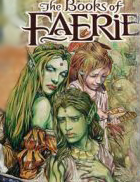
Titania is a fictional character, a comic book faerie published by DC Comics. She first appeared in The Sandman #19, and was created by Neil Gaiman and Charles Vess. She is inspired by and implied to be the same as Titania as the faerie queen in William Shakespeare's play A Midsummer Night's Dream.
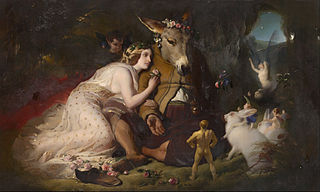
Nick Bottom is a character in Shakespeare's A Midsummer Night's Dream who provides comic relief throughout the play. A weaver by trade, he is famously known for getting his head transformed into that of a donkey by the elusive Puck. Bottom and Puck are the only two characters who converse with and progress the three central stories in the whole play. Puck is first introduced in the fairies' story and creates the drama of the lovers' story by messing up who loves whom, and places the donkey head on Bottom's in his story. Similarly, Bottom is performing in a play in his story intending it to be presented in the lovers' story, as well as interacting with Titania in the fairies' story.

Titania is a character in William Shakespeare's 1595–1596 play A Midsummer Night's Dream.
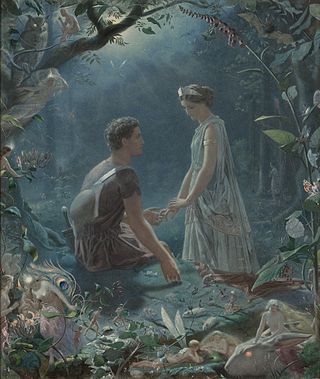
Hermia is a fictional character from Shakespeare's play, A Midsummer Night's Dream. She is a girl of ancient Athens named for Hermes, the Greek god of trade.
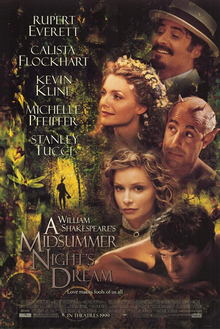
A Midsummer Night's Dream is a 1999 fantasy romantic comedy film written, produced, and directed by Michael Hoffman, based on the 1600 play of the same name by William Shakespeare. The ensemble cast features Kevin Kline as Bottom, Michelle Pfeiffer and Rupert Everett as Titania and Oberon, Stanley Tucci as Puck, and Calista Flockhart, Anna Friel, Christian Bale, and Dominic West as the four lovers.
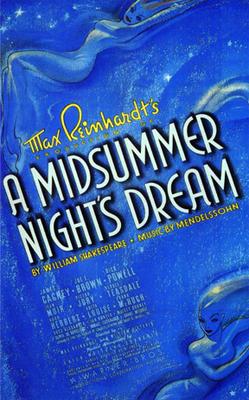
A Midsummer Night's Dream is a 1935 American film adaptation of the Shakespearean play of the same name. It is directed by Max Reinhardt and William Dieterle, produced by Warner Bros., and stars James Cagney, Mickey Rooney, Olivia de Havilland, Jean Muir, Joe E. Brown, Dick Powell, Ross Alexander, Anita Louise, Victor Jory and Ian Hunter. The screenplay, written by Charles Kenyon and Mary C. McCall Jr., is adapted from Reinhardt's Hollywood Bowl production of the play from the previous year.

A Midsummer Tempest is a 1974 alternative history fantasy novel by Poul Anderson. In 1975, it was nominated for the World Fantasy Award for Best Novel and the Nebula Award for Best Novel and won the Mythopoeic Award.
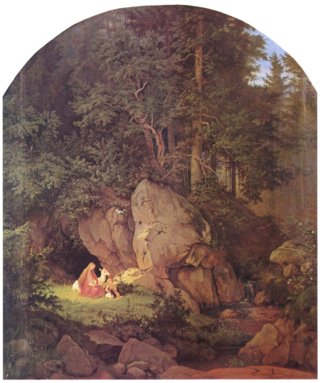
In folklore and fantasy, an enchanted forest is a forest under, or containing, enchantments. Such forests are described in the oldest folklore from regions where forests are common, and occur throughout the centuries to modern works of fantasy. They represent places unknown to the characters, and situations of liminality and transformation. The forest can feature as a place of threatening danger, or one of refuge, or a chance at adventure.

A Midsummer Night's Dream is a 1909 American film directed by Charles Kent and J. Stuart Blackton, and starring Walter Ackerman and Charles Chapman. It was the first film adaptation of the eponymous play by William Shakespeare. The movie was made during summer 1909, but not released until December 25.

Faerie, The Fair Lands or The Twilight Realm is one of two fictional otherdimensional homelands for the Faerie, as published by DC Comics. The Vertigo Comics realm of Faerie is an amalgam of the mythological realms of Álfheimr, Otherworld, the Fortunate Isles, Tír na nÓg and Avalon. This mix is heavily influenced by Shakespeare's play A Midsummer Night's Dream. It is home to the faeries and other mythical races, ruled over by the Seelie Court and King Auberon and Queen Titania. Faerie debuted in The Books of Magic #3, and was created by Neil Gaiman and Charles Vess.

The 1970 Royal Shakespeare Company (RSC) production of A Midsummer Night's Dream was directed by Peter Brook, and is often known simply as Peter Brook'sDream. It opened in the Royal Shakespeare Theatre at Stratford-upon-Avon and then moved to the Aldwych Theatre in London's West End in 1971. It was taken on a world tour in 1972–1973. Brook's production of A Midsummer Night's Dream for the RSC is often described as one of the 20th century's most influential productions of Shakespeare, as it rejected many traditional ideas about the staging of classic drama.

In folklore and literature, the Fairy Queen or Queen of the Fairies is a female ruler of the fairies, sometimes but not always paired with a king. Depending on the work, she may be named or unnamed; Titania and Mab are two frequently used names. Numerous characters, goddesses or folkloric spirits worldwide have been labeled as Fairy Queens.

The Great Night is a 2011 novel by American author Chris Adrian. Billed as a retelling of William Shakespeare's A Midsummer Night's Dream, the novel details the interaction on one night between the faerie kingdom about to be destroyed and three mortals heartbroken over lost relationships.
The Dreaming is a 2001 musical written by Howard Goodall and Charles Hart, based on William Shakespeare's A Midsummer Night's Dream but reset in the Edwardian period.

Scene from A Midsummer Night's Dream. Titania and Bottom is an 1851 oil-on-canvas painting by British artist Edwin Landseer. Landseer was mainly known for his paintings of animals: this is his only painting of a fairy scene. The painting depicts a scene from the third act of William Shakespeare's play A Midsummer Night's Dream. It has been in the collection of the National Gallery of Victoria in Melbourne, Australia since 1932.
Le Songe d'une nuit d'été is a French TV film from 1969. It is based on A Midsummer Night's Dream by William Shakespeare, and was directed by Jean-Christophe Averty.
J. R. R. Tolkien derived the characters, stories, places, and languages of Middle-earth from many sources. Shakespeare's influence on Tolkien was substantial, despite Tolkien's professed dislike of the playwright. Tolkien disapproved in particular of Shakespeare's devaluation of elves, and was deeply disappointed by the prosaic explanation of how Birnam Wood came to Dunsinane Hill in Macbeth. Tolkien was influenced especially by Macbeth and A Midsummer Night's Dream, and he used King Lear for "issues of kingship, madness, and succession". He arguably drew on several other plays, including The Merchant of Venice, Henry IV, Part 1, and Love's Labour's Lost, as well as Shakespeare's poetry, for numerous effects in his Middle-earth writings. The Tolkien scholar Tom Shippey suggests that Tolkien may even have felt a kind of fellow-feeling with Shakespeare, as both men were rooted in the county of Warwickshire.















